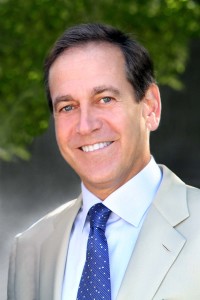Dr. Kevin Plancher with Plancher Orthopaedics & Sports Medicine explains why an increasingly common artificial joint replacement procedure may work for you.
NEW YORK and GREENWICH, Conn. (PRWEB) December 21, 2017
When the simple act of raising your arm becomes impossible because of shoulder damage, an innovative surgery that defies the shoulder’s normal anatomy may be exactly what’s needed. But it’s important to understand the pros and cons of reverse total shoulder replacement surgery, which has been in use in the United States since 2004, according to orthopaedic surgeon Kevin D. Plancher, MD, founder of Plancher Orthopaedics & Sports Medicine.
About 53,000 types of shoulder replacement surgeries are performed each year nationwide, according to the American Academy of Orthopaedic Surgery. An increasing number of those are reverse total shoulder replacements. The procedure is aptly named since it reverses the anatomy of the shoulder by replacing the socket side of the joint with a ball and the ball side with a socket, unlike traditional shoulder replacement.
Who’s the best candidate for reverse total shoulder replacement? Patients with shoulder joint arthritis who also have a significant tear in their rotator cuff, Dr. Plancher says. For these people, typically over age 65, progressive weakness and pain has made raising their arm to shoulder height unmanageable.
“We raise our arms countless times each day while dressing, eating and other routine activities,” he says. “When you can’t do that, and you’re also suffering terrible pain that isn’t alleviated by medications, physical therapy or other treatments, reverse shoulder replacement surgery could be the answer.”
Pros of reverse shoulder replacement
The shoulder joint is often called a “ball and socket” joint because it’s formed by joining the “ball” – the dome-shaped head of the upper arm’s humerus bone – with the “socket,” or glenoid cavity of the shoulder. When a patient’s rotator cuff has been torn due to an accident or fall, compounding the damage done by existing arthritis in the joint, the shoulder becomes highly unstable.
Reversing the natural anatomy of the shoulder stabilizes the joint, Dr. Plancher explains. “Reversing the position of the ball and socket in reverse total shoulder replacement surgery compensates for the loss of the rotator cuff,” he says, “and the deltoid muscle in the shoulder can again raise the arm.”
Another pro: It can be performed on those for whom a previous shoulder replacement didn’t work. It may also help those with complex fractures of the shoulder joint, chronic shoulder dislocation or even a tumor of the shoulder joint.
“Patients seeking reverse shoulder replacement have often run out of options to restore function to their damaged shoulder,” Dr. Plancher says. “The biggest pro of reverse shoulder replacement surgery, then, is to essentially give them back to a more normal life hopefully without pain.”
Cons of reverse shoulder replacement
As with any surgery, reverse shoulder replacement surgery comes with certain risks, Dr. Plancher notes. Potential complications include infection, shoulder dislocation, nerve or blood vessel damage, and loosening of the artificial joint.
“Performing reverse total shoulder replacement is a technically demanding surgery and should be done by an experienced surgeon,” advises Dr. Plancher, who lectures globally on issues related to orthopaedic procedures and sports injury management. “While there are several cons, there are many pros to the procedure that outweigh any drawbacks for carefully selected patients.”
Kevin D. Plancher, MD, MPH, is a board-certified orthopaedic surgeon and the founder of Plancher Orthopaedics & Sports Medicine.
Plancher Orthopaedics & Sports Medicine is a comprehensive orthopaedics and sports medicine practice with offices in New York City and Greenwich, CT. http://www.plancherortho.com
http://www.prweb.com/releases/2017/12/prweb15021119.htm

